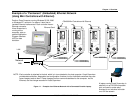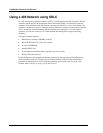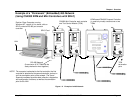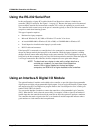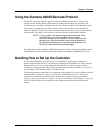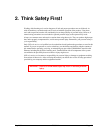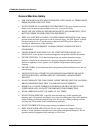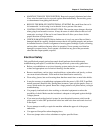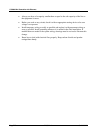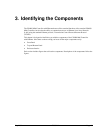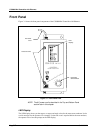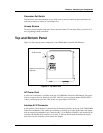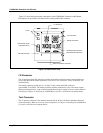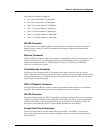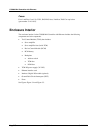
Chapter 2. Think Safety First!
May 2002 T-38324-A Page 2-3
• MAINTAIN TOOLS IN TOP CONDITION. Keep tools properly lubricated and clean.
If any wires become frayed or exposed, replace them immediately. Prevent dirt, grease
or contaminants from getting into the tool.
• REDUCE THE RISK OF UNINTENTIONAL STARTING. Be careful how the tool is
left unattended. Avoid resting it on its throttle lever to prevent false starts.
• CONTROL THE DIRECTION OF ROTATION. The reaction torque changes direction
when going from forward to reverse. Always be aware in which direction the tool will
rotate prior to using it. If the tool is not fixtured this will allow you to brace for the
proper direction of torque reaction.
• CHECK DAMAGED PARTS. Before further use of a tool, any part of the tool that is
damaged should be carefully checked to ensure that it will operate properly and perform
its intended function. Check for alignment of moving parts, breakage of parts, mounting,
and any other conditions that may affect its operation. Never operate a tool that has
damaged or exposed wires. Never operate a tool that has any part of the powertrain,
other than the output spindle, exposed.
Electrical Safety
Only qualified and properly trained personnel should perform electrical/electronic
troubleshooting and repair. Consider the following electrical system safety guidelines:
• Before you troubleshoot or service a fastening system station, be sure you have an up-
to-date and appropriate set of electrical drawings for that station.
• Remove metal items, such as rings, metal necklaces, wristwatches and jewelry, as these
can create electrical hazards. Wear medical alert identification cautiously.
• Wear safety glasses, but avoid wearing those that have metal rims or metal side shields.
• It may be necessary to troubleshoot equipment while the power is ON. ONLY qualified,
trained personnel should do this. During these instances, open only the panels, doors, or
covers which need to be opened. Know the voltage present at all points before you begin
troubleshooting.
• Use properly insulated tools when working on electrical equipment to reduce the
possibility of shock. Make sure the insulation is adequate to safeguard against the high
voltages present.
• If you must work on the electrical system, be sure the main disconnect switch on the
power panel is in the OFF position and locked out with locks from each trade involved
in the repair.
• Do not attempt to modify or repair the machine without the approval of the proper
authorities.
• Use approved fuse pullers when changing fuses.
• Never use jumper wires or fuse substitutes to replace specified fuses.



